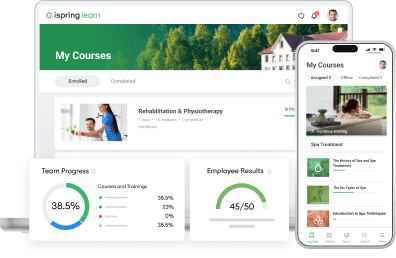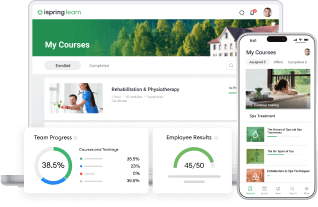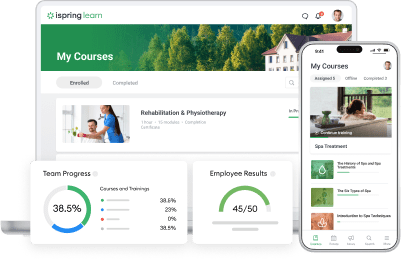How to Develop a Training Program for Employees

When you take a closer look at this list of the best places to work, you’ll notice that those companies have several things in common. One of them is an opportunity for employees to grow and develop, which is truly inspiring.
But what do we need to learn to develop a training program for employees? In this article, you’ll get a holistic view of employee training models and the process of designing a training plan.
What Is Employee Training and Development?
A training program is a planned sequence and combination of activities designed to equip employees with knowledge and both hard and soft skills to become better professionals.
An effective training program is aimed at achieving specific business goals. Depending on the purpose, there may be different types of employee training programs such as leadership training, compliance, sales, product, or management training. Effective Training programs can be instructor-led, team-based or individual-based and can take place online, in classrooms or as on the job training.
What Makes an Effective Training Program
Let’s look at the key factors of effective employee training that will help you make your programs more successful:
- Consistency. Effective employee training works best when it’s consistent, especially for teams spread across different locations, languages, or cultures. This approach keeps everyone on the same level by offering equal access to high-quality resources, with translated materials, relevant examples, and standard assessments.
- Quality engagement. When employees are genuinely interested, training becomes more effective. Results-driven, rewarding, and engaging training plans make knowledge retention easier. Using techniques like gamification and scenario-based learning helps capture attention, keeping trainees involved throughout the process.
- Personalized learning. Personalized employee development plans work wonders when it comes to improving training effectiveness. No two employees learn the same, so creating a training plan with adjustments to an individual employee’s preferences and learning style makes a big difference.
- Segmented learning units. When developing a training plan, provide actionable, bite-sized learning experiences to make it easier for your employees to study and allow them to complete training in logical segments. This will help you maximize training effectiveness.
- Data-driven improvements. For a training plan that delivers real results, start by pinpointing where learners may need extra support before launching the program, then check in on progress along the way. This approach makes it easy to spot what’s working and where to tweak things. A learning management system (LMS) with rich reporting features can make tracking and fine-tuning easier.
- Collecting and processing feedback. According to Forbes, employees who feel their voices are heard are 4.6 times more likely to feel empowered to perform their best work. That’s why collecting employee feedback is an essential part of developing training plans for staff — it helps you tailor content precisely to meet employees’ ongoing and long-term needs.
How to Develop an Employee Training Plan
Effective training programs don’t manifest overnight, they’re the result of a careful preparation and a robust employee development plan. Below are step-by-step instructions on how to create a training plan for employees that aligns with business goals and is engaging for learners.
Step 1. Understanding the task
Before you start developing a training plan, you need to do some analysis. Imagine your car’s engine starts making screeching sounds. Should you inflate the tires, replace the suspension, or just add some oil? You can do all those things, but a diagnostic test will show you exactly what should be fixed without the need to check every single detail.
In a similar way, the idea of developing training programs for employees may come from anywhere in the company, from the head of the sales department, whose team didn’t reach the employee performance targets, to someone who thinks that there are too many meetings, and work hours are being mismanaged. So before you begin writing a script for a new online course, it’s a good idea to ask some questions as step 1. These questions will form the basis of what’s needed for running a training needs analysis.
Training needs
Developing a training strategy always factors in one key consideration: a desire for change. At this step, your goal is to determine the reason for the gap between the current situation and the desired outcome. This gap is called the need. Conducting a training needs analysis before building a training program increases the chances of reaching training objectives and reduces the risk of expensive mistakes.
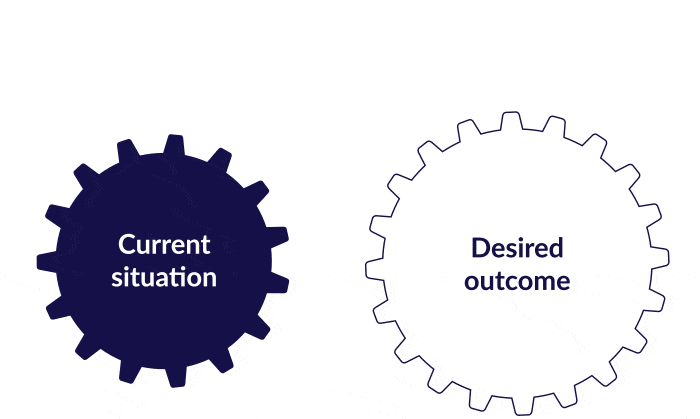
The gap between the current situation and the desired outcome is the need.
To get information about the situation the company is dealing with, the needs, and the desired results is possible mostly through interviews with stakeholders and everyone who’s interested in the success of the employee training plan. Those people might be executives, managers, potential participants, or even customers.
There are books on how to assess needs, but here’s a short list of questions that will be a good start:
- Is there really a need for training? Can the desired result be achieved in a different, less expensive, or more efficient way?
- Why do they need training? How will it help the client?
- What problem does your client want to solve with the help of the training? What is its useful effect?
- What will happen if there’s no training?
Training goals
Training goals are essential information that must be put down before you continue developing learning programs for two reasons: a) you’ll get a clear picture of what you’re trying to reach and b) they serve as a baseline that will be used as success metrics for the program after it has been launched.
Training goals should be specific and measurable, and it’s always better to use action verbs. For example:
- To increase employees’ efficiency by xyz%
- To meet workplace safety requirements
- To reach xyz% KPI
Target audience
Trying to build a training program for effective employee development is just like mapping a route to the desired destination. You should make it for a certain reason as well as for a certain target audience. Before you proceed with your employee training program development plan, have a closer look at the people who are going to be your learners.
- How many learners are there?
- Who are they? What is their position? (Are they in key leadership roles, HR, managers, product line workers, etc.?)
- What are their characteristics? (Average age, educational level, preferred classroom style, computer literacy, geographic location, etc.)
- Are there any learners with disabilities?
- Have the learners received prior training in this field of knowledge? How familiar are they with the subject?
Also, it’d be very useful to move beyond neutral descriptions received from the client by talking directly to potential learners.
- What topics do they suppose to be the most useful in their work?
- Are there any special requests?
- What are their previous learning experiences? What are their attitudes toward learning? Will anyone likely resist training? If so, why?
Task environment
Now that you’ve made sure that developing training programs for staff is the solution to your company’s learning needs, and you know what your goals and who your learners are, it’s time to agree on organizational questions. Find out and write down in what form your client expects the result from each training session, and what is considered to be mission accomplished.
- Who is the decision maker?
- Who are the stakeholders? Who else knows about the project and can provide you with useful information?
- Are there any preferences in the usage of certain training technologies, tools, and delivery methods?
- What kind of media should be used (text, video, audio, or something else)?
- In what form does the client expect the result? Is it a SCORM package? Is it a PPT presentation plus a script in Word? Do you need to additionally create a facilitator’s guide? Are follow-up activities or sessions necessary?
- What are the deadlines for the project?
- Are there any restrictions or factors that affect the way in which the result will be achieved?
- Who will upload the program to a learning platform and administer it?
- What is the budget for the project?
Don’t worry if you feel like you’re asking too many questions. You aren’t, on the contrary, it’s very likely that you’ll have to ask additional questions as the project starts to take shape.
Step 2. Designing the Structure of the Training Program
After the analysis stage is completed, just take the content, arrange it into lessons, add a short quiz at the end of every unit, and voila. Just kidding. Clients expect more than a mindless pile of text with random pictures.
What you need to do now is identify content that matches the learning needs, a suitable format for distributing it, and some easily measurable success metrics that help you monitor the course of the program.
Also read: Key Recruiting Metrics and How to Improve Them with Online Training
Learning objectives
Establishing your learning objectives will inform you on how to build a training program. Unlike training goals focused on business metrics, learning objectives are learner-centric; they describe what people should know, be able to do, or feel as the result of the training. Good learning objectives are usually tightly connected with learners’ on-the-job results. “When learners complete this program, they’ll be able to…
- … use the SPIN Sales technique
- … apply advanced Excel formulas for marketing data analytics
- … demonstrate a pleasant attitude towards customers
- … feel more confident at high-level negotiations.”
Since building a training plan usually involves creating more than one module or lesson, you’ll also need to write down subgoals for each of them. If the overarching learning objective is to teach employees how to use a popcorn machine, the subgoals can be:
- For lesson 1 — learn the control switches
- For lesson 2 — learn how to install the machine and make it ready for work
- For lesson 3 — learn how to fill the machine with ingredients
- For lesson 4 — learn how to sanitize the machine
Instructional tactics
When creating a training program for employees, it’s essential to keep a structure in mind. Dave Meier, in The Accelerated Learning Handbook, describes a four-phase learning cycle. These phases are:
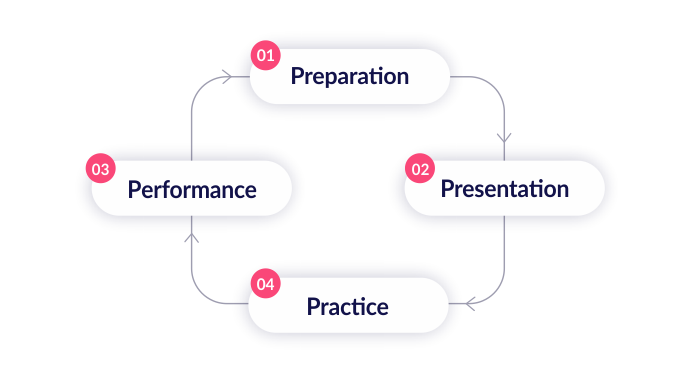
“Unless all four components are present in one form or another, no real learning occurs.”
Dave Meier, The Accelerated Learning Handbook
Each phase requires well-thought-out tactics because the failure of only one phase will likely cause a failure or weak results for the whole program.
1. Preparation
The purpose of this phase is to arouse the learners’ interest by providing them with the context, explaining the relevance of the training content, and setting goals and expectations. Also, you’ll have to deal with any negative feelings that the learners might have.
An overlooked preparation phase leads to boredom, lack of attention, and failure of the learning program.
2. Presentation
The next phase is presenting training content to learners in a meaningful and engaging way.
First, there’s graphic design; you need to think about how you’re going to manage the learners’ attention with highlights, fonts, and colors. Next, there’s extensive work with the content such as presenting new vocabulary, providing comprehensive examples on every new idea, and considering different learning development styles.
A weak presentation can be identified by a blank expression on the learners’ faces: the eyes see but the brain doesn’t. Building a training program that prioritizes employee engagement should avoid these issues.
3. Practice
The effectiveness of learning is jeopardized when learners don’t have enough time to fully comprehend the new knowledge and skills. At this phase, you need to encourage people not only to passively absorb training content but to consider the idea of integrating it into their everyday lives.
This includes, but is not limited to, various quizzes and interactive practical tasks. You also need to help learners organize information by constructing mind maps and writing key takeaways; help them along the journey by generating analogies, metaphors, and creating storylines; and help the information stick by using mnemonic strategies and underlining the most important things.
It is not a simple task to create a training plan that allows for meaningful practice, which means it’s vital that you use learning resources, materials, and tools effectively.
4. Performance
Without immediate application, much of the freshly obtained knowledge and skills training will quickly go up in smoke. How will you encourage learners to use the new information outside the class? Will you create training handouts to print and use in their daily routine? Provide learners with post-training employee performance evaluation and feedback? Or maybe even run a post-training series of micro-lessons so the information has a higher chance to be retained?
Accounting for how your employees will continue to build on their learning is a vital step in how to create a corporate training program that succeeds.
“When the pen is clicked repeatedly, a series of six short messages can be viewed on the screen. The pen can be used to remind participants of specific techniques learned during the training.” ~Sheila W. Furjanic, Laurie A. Trotman, Turning Training into Learning: How to Design and Deliver Programs That Get Results

Rotating message pens for participants of the course Time-Management for Sales Reps.
Whatever your ideas are, you need a development plan to lay them out and smoothly build in a learning process outline before the actual creation of the training begins. This naturally leads us to the next point.
Structure
Keeping the model of the learning cycle in mind, you need to decide how you will sequence the information and then create a framework for the program.
Imagine you’re supposed to create a training plan on operating new high-tech equipment. How will you organize the information? The first thing that might enter your mind is to create a series of lessons that describe all the parts and all the features of the machine one by one; this is not how to set up a training program.
Charles Reigeluth, an American educational theorist, developed something called elaboration theory. According to this approach, modules within effective training programs should be organized in increasing order of complexity so that each module elaborates upon the previous one.
In the case of complex equipment, you could start with teaching the simplest task that technicians need to perform with the machine. While performing this simple task, the learner would become familiar with some of the major functional elements. The following lessons would teach more complex scenarios until the learners are able to perform the full range of tasks. This approach provides learners with knowledge in the context of a real on-the-job application.
So, keep these three principles in mind when thinking about how to develop a training plan with an effective structure:
- From context to content
- From general to specific
- From simple to complex
Using these principles, you’ll be able to create a meaningful context for learners so they can effectively assimilate new knowledge and skills.
When the general structure of your course is ready and you have a brief outline of the topics you’d like to cover, you’re ready to go to the next step and fill the program with training resources.
Step 3. Developing the Content
You’re almost done creating a training program. eLearning content can take various forms: lectures, e-books, video-lessons, realistic simulations, interactive assessments that look more like games, and the list goes on. Developing a training program for employees to succeed requires as many types of activities as possible to retain learners’ attention and appeal to different learning styles.
Training module
You already know how to design a training program structure, but you’ll also need to organize and present content within each training module. Below is an easy yet effective module structure:
- Give a general overview
- Provide details
- Add concrete real-world examples
- Make a summary of what has been learned
Also, each module or lesson, or whatever you prefer to call each independent unit of the program, will need an action plan. The employee development plan will provide a clear focus on the topic of each module, help you choose suitable learning activities, and allow you to be sure that the content fits the time frames set for all training sessions. For example, below is a grid of a course on phone negotiations for sales reps:
| Duration | Activity | Aid/reference |
| 5 min | Course introduction
| Slides 1-4 |
| 10 min | Practical exercise as a warm-up activity:
| Example of a cold call to a client (audio recording). Slides 5-7 |
| 22 min | Lectures on the steps of the sales process and techniques:
| Audio recordings of real phone calls. A block-scheme of the process that can be printed by learners. |
| 8 min | Check for understanding | Test |
| 15 min | Practical task | Dialogue simulation |
| 2 min | Closure |
Training materials
The development of actual presentations, physical training materials, and employee training activities is at the heart of any effective employee training plan. But if you’ve executed the previous steps — know for sure who your learners are, what you need to teach them, and why — developing a training program structure and learning resources is just a matter of technique.
Depending on your goals, you may develop e-courses on your own or look to designers, video editors, and voice over artists for help. But even if you can afford to hire a full team of professionals in different areas, we’d still recommend having a working knowledge of how to create training program materials with the most popular authoring tools.
| Authoring tools | Use Case |
| iSpring Suite |
|
| Adobe Captivate |
|
| Articulate 360 |
|
| Lectora |
|
| Camtasia |
|
Working with SMEs
Subject matter experts, or SMEs, are the most valuable source of information. They provide unique content, review and correct the content of the program, and make edits if necessary. Their specialist knowledge will help guide you in how to make a training program.
There are two approaches to dealing with SMEs: informal and formal.
If you create in-house employee training programs and need a piece of advice from in-house experts, the informal approach may work well; you just ask around among your colleagues who have some learning experiences, and try to find someone who might help with preparing the content. If you’re lucky, your SME will help with how to make a training schedule, review draft content, or even create some part of it on their own.
On the other hand, the most experienced experts usually have extremely busy schedules, so they might not be happy with the additional workload. In this case, you’ll need to gather support from the executives who initiated the employee training programs; they’ll be able to get subject matter experts to cooperate by revising the priorities of their current tasks or offering a reward for participating.
In some cases, you’ll have to engage SMEs from outside the company. Say, you need to create a program on new software, but nobody in your company has used it before. In this situation, you need a formal approach and a contract where you’ll write down all the arrangements: what kind of involvement you expect from the SME, what exactly you want them to do, what the deadlines are, and what the reward is.
Remember, the SME’s job is not to tell you how to create a training program or give you training materials, but to give you the expert knowledge required to fill the course. This may then give you a better understanding of how to develop a training program for employees to learn exactly what they need to.
7 Examples of Effective Employee Training Programs
To better illustrate how to develop a training curriculum successfully, we have compiled a list of employee training plan examples. The following is a collection of successful training plans implemented by companies:
Example 1: Castle
Castle, a construction services provider that develops and manages mainline pipelines, pipeline integrity, facility construction, and many other energy-related projects in North America, created comprehensive induction and compliance training programs. Moving part of training online allowed the company to not only improve compliance but also to reduce downtime and instructor-led training costs.

Fire Extinguisher Training (Core Safety Training)
Example 2: Tattile
Tattile, an Italian company that produces and sells smart traffic cameras to system integrator companies, developed a product training program for customers on how to install and configure its products. This is an example of a training plan that helped the company significantly reduce tech support workload and optimize training costs.
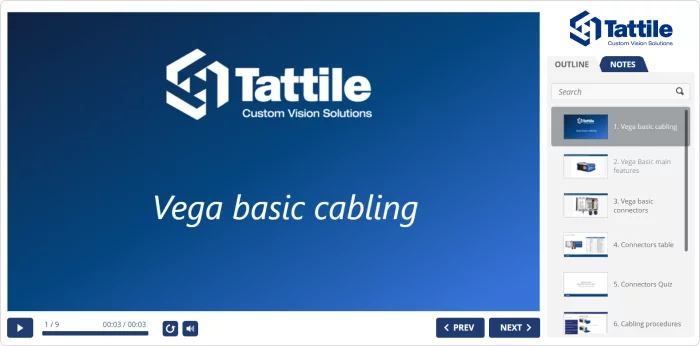
An example of the course Tattile uses for customer training
Example 3: Suzuki Australia
Suzuki Australia, a subsidiary of the Suzuki Motor Corporation, a Japan-based automotive firm, creates online learning programs for their dealerships’ technical staff. With online training technology, they managed to train 100% of their dealerships’ technical and sales staff throughout Australia on a new model of motorcycle within a very short time.
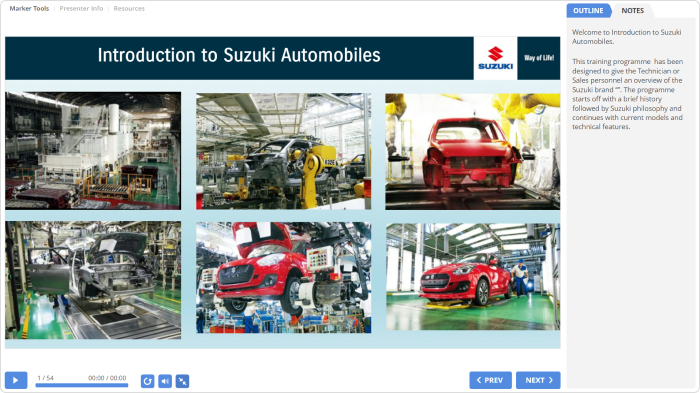
The Introduction to Suzuki training course covers all their models, engines, safety features, etc.
Example 4: Unichem Laboratories Ltd.
Unichem Laboratories Ltd., one of India’s oldest and largest pharmaceutical companies, created an online compliance training program that lets them increase employee compliance and accelerate the training process. Read the case study to see a sample of a training plan from Unichem Laboratories Ltd.
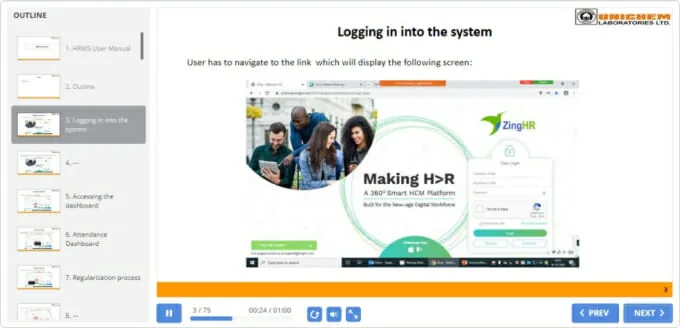
An example of a course created with iSpring Suite
Example 5: NAOS
NAOS, an international skincare cosmetics company, launched its first online employee training program for product training and distributors within three months. It allowed them to cut employee training and development expenses to a quarter of their previous cost.

Dialogue simulations help learners gain confidence before their final test
Example 6: Forever Direct
Forever Direct, an American marketing company that manufactures and markets aloe vera-based health, wellness, and beauty products, developed compliance training on warehouse traffic. This is an excellent example of a training program that allowed them to reduce accidents by 50%.
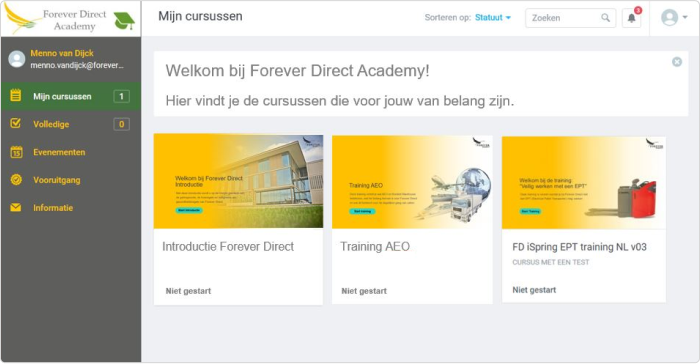
A new employee joins the Forever-team and receive a general introduction
Example 7: ALIVE
ALIVE, an Australian youth suicide prevention organization, provides mental health programs for young people. Their training programs are developed to address key issues facing youths, including mental health crises, stress, anxiety, bullying, and healthy boundaries around social media and the use of technology. The online format helps them make their training cost effective, and reach a larger market.
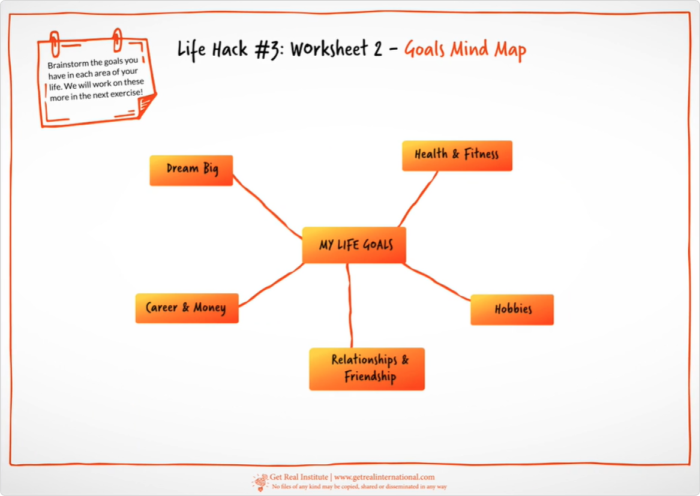
An abstract from a course created with iSpring Suite
FAQ on Employee Training Programs
Here are some important questions you might want answers to when you create a training plan:
1. What are the benefits of having an employee training plan?
Having an employee training plan has several benefits for both employees and the organization.
- It enhances employee hard and soft skills and knowledge, enabling them to perform their job more effectively. This leads to increased productivity and a better overall performance of the company and individual job satisfaction.
- A training development plan can help boost employee retention, satisfaction, engagement, and buy in as they feel valued and supported. This increases employee loyalty and reduces turnover rates.
- Effective training programs promote consistency in processes and standards within the organization, ensuring that employees are aligned with the company’s goals and values.
- These programs contribute to a positive company culture. They foster a learning experience where employees feel encouraged to continually develop and grow professionally.
2. How do I choose the right employee training program for my company?
When figuring out how to build a training plan, start by conducting a needs assessment to evaluate gaps in employee knowledge and skills and define your company’s training objectives. The type of training is important: management training, sales, product, compliance or general leadership training. Also, encourage your employees to voice their training and development needs and preferences. All this will help you choose the right program.
Final Thoughts
Now that you’ve read the article, you should have a good idea of how to develop a training plan for employees to meet their learning outcomes effectively. You might get the impression that creating employee training programs is a linear sequence of steps. That’s not quite right. Although this sequence can be used as a guiding principle, feel free to adapt the training models to your particular project: it’ll only benefit the professional training and development if you absorb the general ideas while still taking into account new information or situations.
Creating an employee training plan involves gathering a lot of information, research, decision-making, planning, and collaboration. But just like a journey of a thousand miles begins with a single step, a successful training development plan begins with a single question: Why? Find the answer, and the rest will flow naturally.
That’s it! What’s the most challenging part of creating an employee training program for you? Please share your experience in the comments below!




